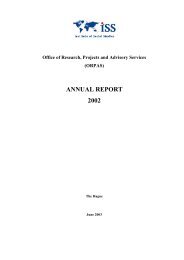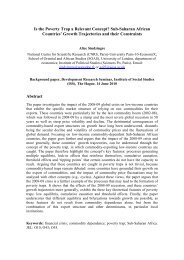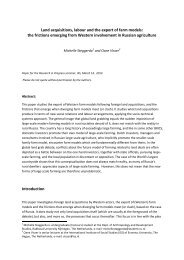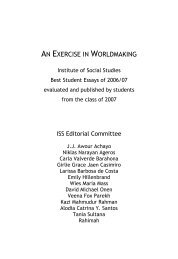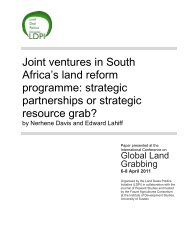AN EXERCISE IN WORLDMAKING 2009 - ISS
AN EXERCISE IN WORLDMAKING 2009 - ISS
AN EXERCISE IN WORLDMAKING 2009 - ISS
You also want an ePaper? Increase the reach of your titles
YUMPU automatically turns print PDFs into web optimized ePapers that Google loves.
132 TISKA YUMEIDA<br />
Source: Prichet, Lant (1995)<br />
Lack of convergence and increasing international inequality has begun<br />
to show the spirit of the North-South trade literatures, specifically the<br />
relationship between primary production and growth. The North is the<br />
manufacturing center and the South is the primary product center issued<br />
by Ronald Findlay (DATE), de-industrialization model by Paul Krugman<br />
(DATE), and The North is an innovator and the South is an imitator by<br />
David Dollar (DATE) will explain the inequality of per capita incomes<br />
occurred in the world. Obviously, this is not a case of permanent disadvantage<br />
for the South, but it is a model of permanent asymmetry between<br />
the North and the South. Thus, while the role of each region in<br />
the world economy changes; there is always a “South”. One of the major<br />
issues is the relationship between the monopoly of the North’s power in<br />
trade and movements in terms of trade. The famous Prebisch-Singer hypothesis<br />
has it that the secular deterioration in terms of trade for the developing<br />
countries is due to the the monopoly of the North’s power in<br />
trade. We can see from the implication of trade liberalization agreement<br />
by Northern (developed) countries. Trade liberalization agreements issue<br />
free access to other countries’ market, the South opens its markets for<br />
the North’s products, however at the same time, the North builds a barrier<br />
for the South’s products. Other arguments why there is non-




